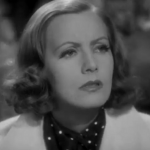 |
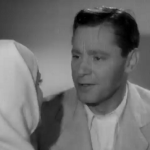 |
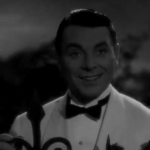 |
| Katrin Greta Garbo |
Walter Herbert Marshall |
Jack George Brent |
| Released by Metro Goldwyn Mayer | Directed By Richard Boleslawski |
||
Proof That It’s Pre-Code-ish
- The film opens with Katrin’s sister’s wedding, and she gives her sister a neglige for a wedding present.
“But don’t tell mother, she’ll think it’s wicked.”
“But isn’t it?”
“Wicked? But of course it is!”
- The two sisters kiss goodbye on the lips.
- It deals with British imperialism in China, kinda, sorta.
- The film centers on the results of a passionate extramarital affair.
The Painted Veil: Or How I Learned to Stop Worrying and Love My Husband
“Well, I don’t know. To be able to absorb oneself must be better than to have nothing to absorb oneself.”
What is it that connects two people? This probably sounds pretty easy. Most of the time it falls it to a number of cut and dry categories, either love, lust, or just an apathetic sense of inertia.
But sometimes the line is blurry and sometimes there’s just no line. That’s the problem Katrin stumbles on in The Painted Veil. Katrin is played by Greta Garbo, too, so you know this isn’t going to be resolved with a song and dance.
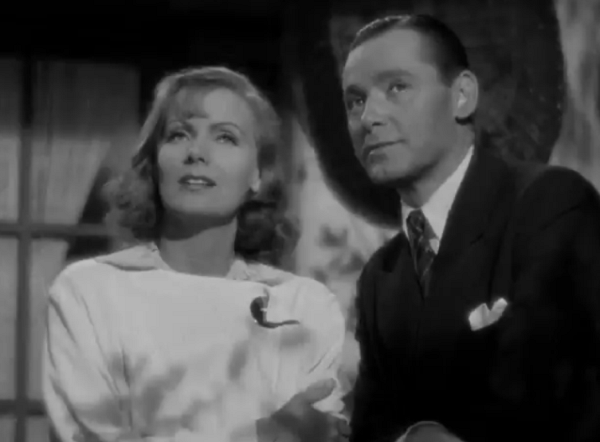
Two stars staring at stars.
Katrin sees her sister married at the film’s beginning, while a childhood friend, Walter (Herbert Marshall), is visiting from his post in China. Walter is a dedicated scientist much like Katrin’s father, and Katrin knows that his passion, first and foremost, is to involve staring into microscopes day in and day out. But he’s got a nice smile and seems to adore her. Katrin presses her mother for advice, and she tells him that all that matters is that he is good. Katrin moans:
“Must he be good, mother? It’s not very exciting to be good.”
And you know this isn’t going to go very well. Walter’s proposition of marriage is met with a ‘let me think about it’, but he makes her smile and suddenly they’re arriving in Hong Kong. Katrin’s choice to marry Walter without love soon comes back to haunt her when she arrives in the exotic port and meets Jack (George Brent), one of the British attachés to the city.
Jack is a good little bureaucrat who’s sought adventure all across the British Empire– which, at this point in history, included Egypt, India, Australia, and exotic Canada. We only briefly see Jack’s wife, but it’s obvious that she’s a diplomat’s wife to a ‘t’, following her husband anywhere across the globe so long as there’s enclave of other British to play a hand of bridge with.
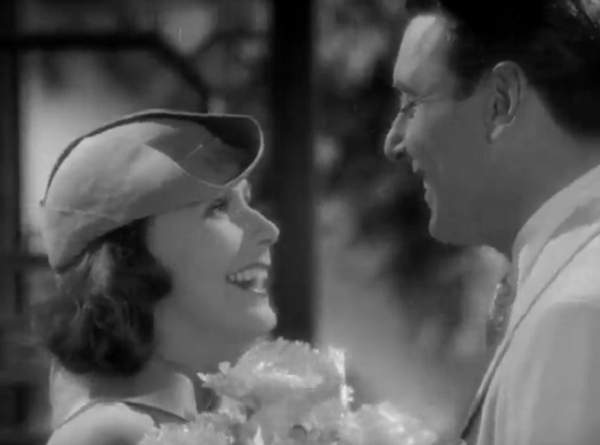
Jack is played by Brent. George Brent.
But while Walter is passionate in his desire to help cure cholera, Jack is passionate in the more conventionally romantic sense– he owns horses and knows enough Chinese to play up the exoticism to the naive Katrin. Jack ain’t a good man, but considering the looks the two share, he’s going to make Katrin feel good.
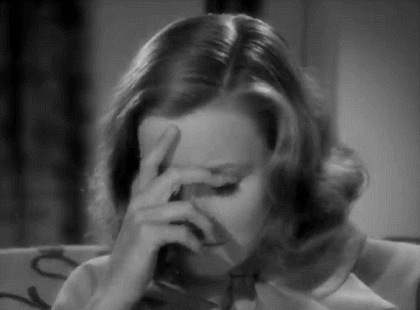
Trying to figure things out.
One locked bedroom door later and it doesn’t take long for Walter to catch on. The poor man is completely devastated. He gives his wife three choices: run away with Jack, return home to her parents, or go with him inland, to the very heart of the cholera epidemic. On confronting Jack, it’s not long before Walter’s ploy is made clear to Katrin– Jack will put his career before her and goes so far to guilt her into returning to her parents rather than have him named in the divorce.
And so it’s off to the wonderful land of cholera.
If Hong Kong was beautiful, exotic, and, most importantly, highly anglicized with Chinese doctors trying to imitate the British vernacular, inland China is a perfect inversion. The ground is mud and the houses derelict, with the dead being left in acres of unmarked graves. General Yu (Warner Oland in yellow face) tries to keep order, and there’s also a drunk Cockney bureaucrat there named Waddington (Forrester Harvey) who indulges in plenty of scotch whiskey and plays records a bit too loud. As the only person with any expertise in the disease and an actual passion to end it, Walter puts himself in charge, working longer hours and exploring the area in hopes of discovering where to head off the disease.
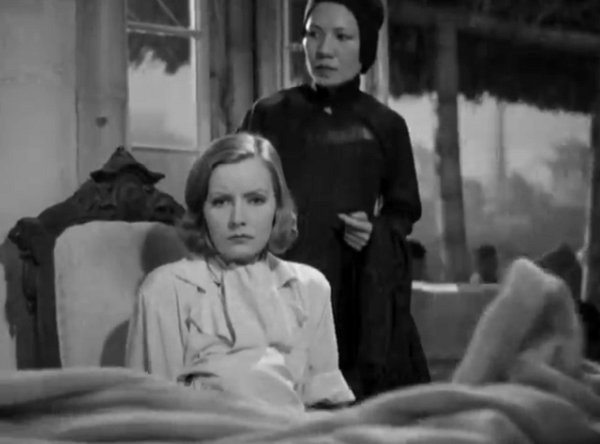
Plague ridden China is quite different than your average Hong Kong Disneyland ride.
Spoilers.
Katrin, who’d flourished in the city she once found exotic, now languishes in a remote outpost, wallowing in sadness and fear. Slowly, as the long days filled with the smell of death roll by, a revelation takes over her. She understands how shallow Jack really was and how Walter didn’t bring her out there to die but because he wanted to destroy her illusions about life. It’s not about the spur of the moment beauty or the strange attractions of the foreign, as Katrin had indulged in. Walter believes the real beauty in life is from devotion to a grand cause.
(The righteousness of Walter is hinted at throughout the movie, outside of the dialogue. After they’re married, the first thing we see Katrin try to do is take a picture. Things are out of focus for Katrin without her knowing it, but Walter sees things and makes them instantly clear. It’s a nice little moment, and subtly reflects how Katrin’s world view is.)
Katrin comes around to understanding the way that Walter loves, slowly, painfully. But as she sees what Walter’s passion creates and inspires, she has to admit:
“I don’t think I have a soul big enough to love you.”
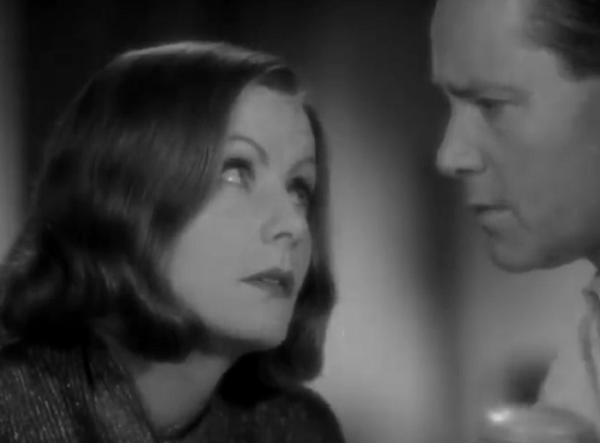
Love in the time of a whole shitload of cholera.
The epidemic gets worse, and Walter has to resort to burning down the town in order to save everyone. The film’s finale definitely reminds one of the importance of informational public meetings before you start setting everyone’s houses on fire, but sometimes these things can’t be avoided. Walter is stabbed, and Katrin’s last minute prayer and denouement with Jack (who showed up at exactly the right moment to have her change in perspective painstakingly explained) reaffirm her new, more caring side. She’s lost the selfishness that so once ruled her, and she will now be at the recovering Walter’s side.
Just as soon as everyone stops trying to killing them for burning down the whole damn village. Seriously, would it have killed you to ask people to leave before the mass arson began?
End spoilers.
While the fireworks of The Painted Veil are subdued, director Richard Boleslawski and cinematographer William H. Daniels make the most of the setting. China has rarely looked so luxurious, with a portrayal of a native Hong Kong ceremony looking less authentic and more like something out of Flower Drum Song many years down the line. Meanwhile, canted angles abound during the scenes at the cholera panic. And the film’s lighting, of course, makes the most of Garbo’s expressive face. The film’s visuals are backed up by a truly great score– a rarity for this time– and one that carefully enhances the magic of the film’s setting.
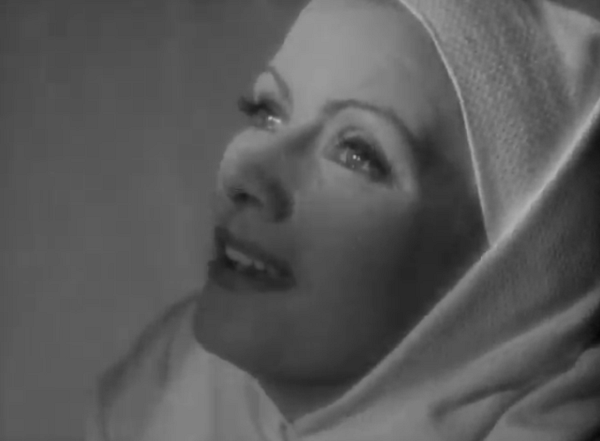
Garbo’s expressive face.
The most interesting thing about The Painted Veil is how much it resembles so many of a certain kind of drama that would come after it. While Mata Hari and other Garbo pre-Codes had ratcheted up the sex as well as the drama, this is the first I’ve seen that restricts the sexual component to a very literal scene of fireworks, something just euphemistic enough that it probably wouldn’t be allowed for much longer. Other productions would follow in this mold from Norma Shearer in MGM’s Romeo & Juliet to grand Warner Brothers productions like Jezebel, climaxing in Gone With the Wind, the most pure of the big studio melodramas where production design and bombastic scores did their damnedest to replace sex with sumptuousness.
And, hey, that’s fine. No one in the audience is going to complain about movies being too good looking. And while there’s no real romance to write home about in The Painted Veil, this one’s got Garbo’s face, a singular tool of yearning and longing that makes the muddy dialogue ring crystal clear. The Painted Veil ain’t a classic, but as a bookend indicator of how Garbo’d grown into the sound era and where movies seemed to be headed, it’s invaluable. The woman could act.
Gallery
Hover over for controls.
Trivia & Links
- Released in November 1934, so not technically a pre-Code, but it still has a few scattered elements. Garbo only made five more films after The Painted Veil, including two of her best known talkies, Camille and Ninotchka. She lived in seclusion after that, with many offers but no real interest in coming back before the camera. She died in 1990.
- Via Margutta 51 runs down the differences between this one and the 2006 version starring Naomi Watts, Edward Norton, and Liev Schreiber. I haven’t seen the remake myself, but it sounds interesting. There was also a 1957 remake called The Seventh Sin with Eleanor Parker, Bill Travers, and George Saunders.
- Garbo Forever covers this one with over 100 stills and a rundown of dozens of reviews. They also have biographies on George Brent and Herbert Marshall.
- Tons of posters and stills at Doctor Macro. There are some damned good looking posters for this flick.
- You probably don’t need a review of this one other than Glenn Erickson’s (and mine, too, but you’ve already read that, so no choice about it, I’m afraid). He talks about how the magnetism of Garbo saves the picture, as well as some interesting trivia:
Maugham’s book shows “Kitty” slowly finding new values, when a Mother Superior allows her to help work in the hospital, initially only in a limited way. The MGM adaptation naturally pulls off an instant transformation in which Katrin has suddenly become Florence Nightingale, shielding crying Chinese children from sickness and fear. Garbo is so good that this hoary development never seems tacky.
Awards, Accolades & Availability
- This film is available on Amazon and Warner Archive. I caught it over at Warner Archive Instant, though it may not be currently available there.
Comment below or join our email subscription list on the sidebar! |
||
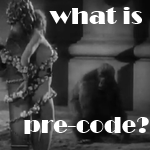 |
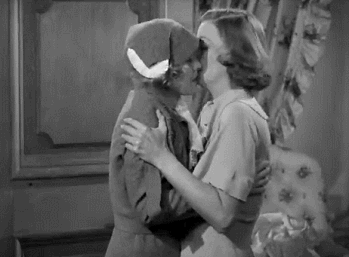 |
 |
 |
 |
|

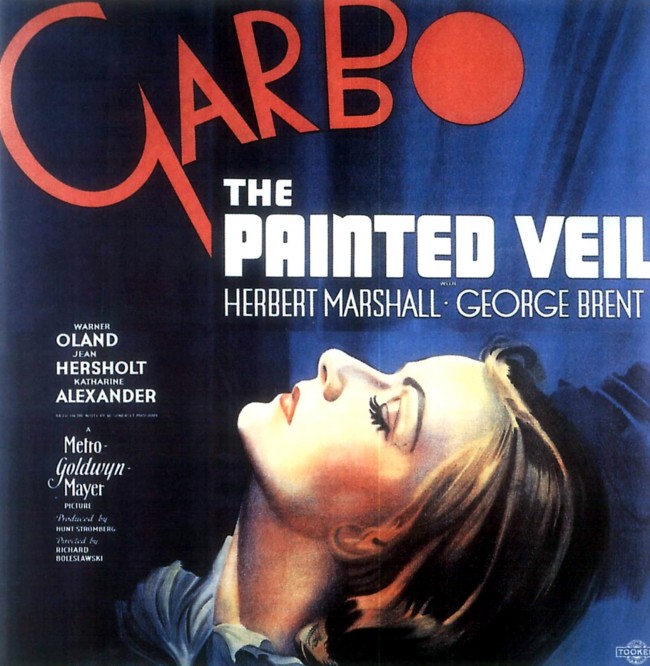



15 Comments
dnoakes@charter.net · January 30, 2015 at 4:51 pm
The remake is very good. Great music, photography and on-location shooting in China helps–also the lack of a “Code” makes the ending a good deal more logical rather than romantic.
Danny · January 30, 2015 at 11:57 pm
I definitely have to check it out– I remember it coming out with a dull ‘thud’ when I worked at a videostore, but that happened with lots of good movies. Thanks for the rec!
Judy · January 30, 2015 at 5:32 pm
I’ve only seen the remake, which I don’t remember all that well now, but have been meaning to read the book and then catch this version, with its fantastic cast. Your review spurs me on to do so sooner.
Danny · January 30, 2015 at 11:57 pm
I think you’ll enjoy it, Judy. It’s very stylish stuff.
Vanessa B (@callmeveebee) · January 30, 2015 at 10:25 pm
This is one of the few Garbo films I haven’t seen yet and I’m wondering if I even own it. There are so many films I own on DVD and blu that I haven’t watched yet, so seriously, I COULD own this movie and I don’t even know it lol I’ll check tonight when I get home from work 😉
Danny · January 31, 2015 at 12:03 am
One of my favorite experiences in the world is thinking, “Oh crap, I need watch this certain movie right now” and I notice it in the pile next to my computer. This both means I own too many, yet I own the right number of too many movies, methinks. 🙂
@bbandmoviegal · January 31, 2015 at 12:24 am
I found this film improves on repeated viewings. On my first viewing I felt it was rushed and truncated, and I felt it missed opportunities to flesh out some of the emotional scenes, especially those where the individuals’ perspectives were undergoing changes. I was left somewhat unsatisfied. But my perspective changed when I watched it a second time, and I paid closer attention to the subtleties. I also found that this is one of Marshall’s more well-rounded, nuanced performances. So my advice is to watch it more than once! Luckily, it’s short!
Danny · January 31, 2015 at 12:36 am
Totally! I usually watch all the movies I review for the site twice, with the second time to do screen captures. I find that helps me notice subtleties that I either missed or overlooked the first time in good movies. Uh, and with bad movies, my hatred only grows, which helps with the reviews for them, for sure…
shadowsandsatin · January 31, 2015 at 5:29 am
Really good stuff, as always, Danny. I’ve had this movie in my collection for a while, but couldn’t get into it after a couple of tries. I will definitely try again now. I think you’ll like the remake.
Danny · February 1, 2015 at 11:15 am
Thanks Karen. Hope you like it more this time!
Stephen K · November 16, 2015 at 1:16 pm
Thank you for this review. I always love it. In my view, with all due respect to other’s views, the remake was not a patch on this, and I found it ponderous and a little tacky, its characters neither as attractive or powerful as the originals.
Danny · January 8, 2016 at 12:55 am
Thanks for sharing. I may have to see the remake someday, but I’m in no hurry.
ladylavinia1932 · August 26, 2016 at 6:40 am
There are two remakes – the 1957 movie with Eleanor Parker and Bill Travers called “The Seventh Sin” and there is the 2006 version with Naomi Watts and Edward Norton.
Rach · October 27, 2016 at 2:01 pm
Just so you know, this film isn’t actually pre-code. ‘The Painted Veil’ was in production from July to September 1934, and was released in November 1934. As I’m sure you know, the pre-code period ended on July 1, 1934. So no, this film is not pre-code.
DD · December 31, 2020 at 11:41 am
But when was the script given a green light? Wouldn’t that determine if the movie’s eventual story and scenes were pre-code or not?
Comments are closed.